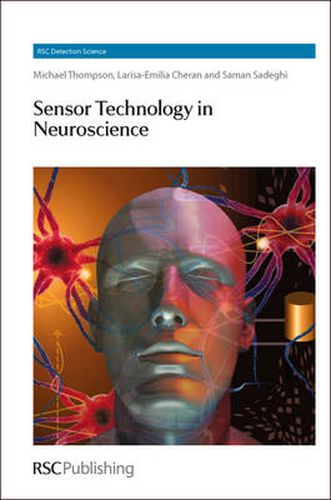Readings Newsletter
Become a Readings Member to make your shopping experience even easier.
Sign in or sign up for free!
You’re not far away from qualifying for FREE standard shipping within Australia
You’ve qualified for FREE standard shipping within Australia
The cart is loading…






Biosensor technology has rapidly expanded into a wide variety of applications in the last few years. Such fields include clinical diagnostics, environmental chemistry, drug discovery and pathogen detection, to name but a few. The structure of these sensors is based on the intimate combination of a biological entity with a transducer capable of generating an electrical signal to provide information on the biological system being studied. Until now there has been a limited treatment of the study of whole cells (as a biological component) due to the difficulty in connecting transducers to cell populations. This book focuses on several aspects of neural behaviour both in vitro and in vivo, and for the first time, the detection of populations of neurons (rather than single cells) will be presented. The fundamental behaviour and characterization of neurons on various substrates, using a variety of electronic devices such as transistors and microelectrode arrays will be discussed. Future perspectives discussed in the book include artificial intelligence using biological neural networks and nanoneuromedicine. The authors have considerable experience in biosensor technology, and have pioneered the study of neural populations using biosensors in collaboration with neurophysiologists and neuroendrocrinologists. This book will be invaluable to university neuroscience and analytical chemistry departments and students, academics and physicians will benefit from its accessible style and format.
$9.00 standard shipping within Australia
FREE standard shipping within Australia for orders over $100.00
Express & International shipping calculated at checkout
Biosensor technology has rapidly expanded into a wide variety of applications in the last few years. Such fields include clinical diagnostics, environmental chemistry, drug discovery and pathogen detection, to name but a few. The structure of these sensors is based on the intimate combination of a biological entity with a transducer capable of generating an electrical signal to provide information on the biological system being studied. Until now there has been a limited treatment of the study of whole cells (as a biological component) due to the difficulty in connecting transducers to cell populations. This book focuses on several aspects of neural behaviour both in vitro and in vivo, and for the first time, the detection of populations of neurons (rather than single cells) will be presented. The fundamental behaviour and characterization of neurons on various substrates, using a variety of electronic devices such as transistors and microelectrode arrays will be discussed. Future perspectives discussed in the book include artificial intelligence using biological neural networks and nanoneuromedicine. The authors have considerable experience in biosensor technology, and have pioneered the study of neural populations using biosensors in collaboration with neurophysiologists and neuroendrocrinologists. This book will be invaluable to university neuroscience and analytical chemistry departments and students, academics and physicians will benefit from its accessible style and format.